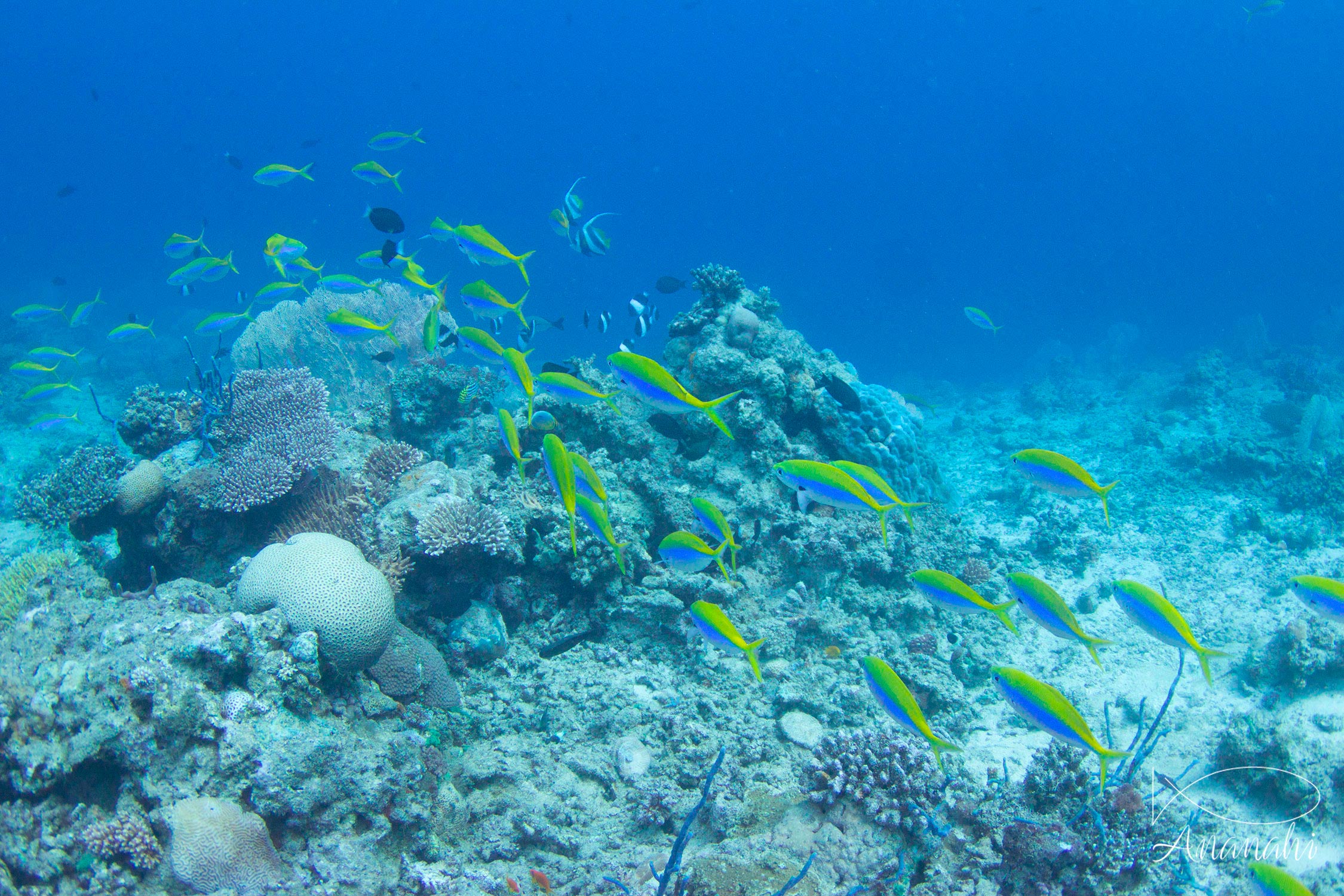
Scientific name: Caesio xanthonota
Size: Up to 15.7 inches
Color: blue, yellow, grey
Distinguishing feature: Fusiform body and forked caudal fin. First upper third of the body is blue (from the front of the head to the caudal), second third is blue and the last third is gray-blue.
Where did we see it: Zanzibar, Thailand, Mayotte

Scientific name: Caesio xanthonota
Size: Up to 15.7 inches
Color: blue, yellow, grey
Distinguishing feature: Fusiform body and forked caudal fin. First upper third of the body is blue (from the front of the head to the caudal), second third is blue and the last third is gray-blue.
Where did we see it: Zanzibar, Thailand, Mayotte
This fish lives in open water, on the surface or often in deep lagoons or near steep slopes.
He lives on a shoal and has diurnal activity. We can see in these shoals its close parent (Caesio teres), to distinguish them we must look at the yellow part which is different in the Teres according to the age and which starts from the caudal diagonally.
Some sharks can stay motionless on the sand (white tips reef sharks, nurse sharks, etc.).
These sharks don't have to swim to bring oxygen to their gills like other sharks (grey, hammerheads tc.)
We can hear the bull shark is very dangerous because of attacks near La Réunion island.
However, tens of them are living at 600 feet from the famous beach of Playa Del Carmen in Mexico. And there are no attacks.
Parrotfish create a protective envelope around them when they are sleeping.
So, don't put the light on them during night dive to don't to wake them up and break this envelope.